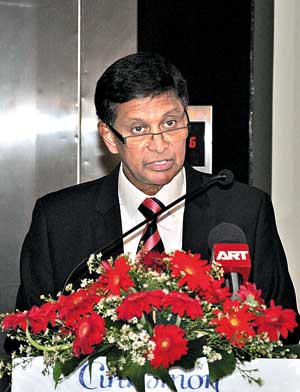Reply To:
Name - Reply Comment
Last Updated : 2024-04-19 18:04:00
 Ladies and gentlemen, welcome to the 24th Annual General Meeting (AGM) of the Industrial Association of Sri Lanka (IASL). The membership of the IASL comprises of 70 plus members representing a diversity of industries large and not so large, extending from glass to electronics to energy and to the fast-moving consumer goods (FMCG) industry. Therefore, the issues and challenges faced by the membership are both unique and specific to an industry, but some are also common to all industries.
Ladies and gentlemen, welcome to the 24th Annual General Meeting (AGM) of the Industrial Association of Sri Lanka (IASL). The membership of the IASL comprises of 70 plus members representing a diversity of industries large and not so large, extending from glass to electronics to energy and to the fast-moving consumer goods (FMCG) industry. Therefore, the issues and challenges faced by the membership are both unique and specific to an industry, but some are also common to all industries.
Add comment
Comments will be edited (grammar, spelling and slang) and authorized at the discretion of Daily Mirror online. The website also has the right not to publish selected comments.
Reply To:
Name - Reply Comment
On March 26, a couple arriving from Thailand was arrested with 88 live animal
According to villagers from Naula-Moragolla out of 105 families 80 can afford
Is the situation in Sri Lanka so grim that locals harbour hope that they coul
A recent post on social media revealed that three purple-faced langurs near t